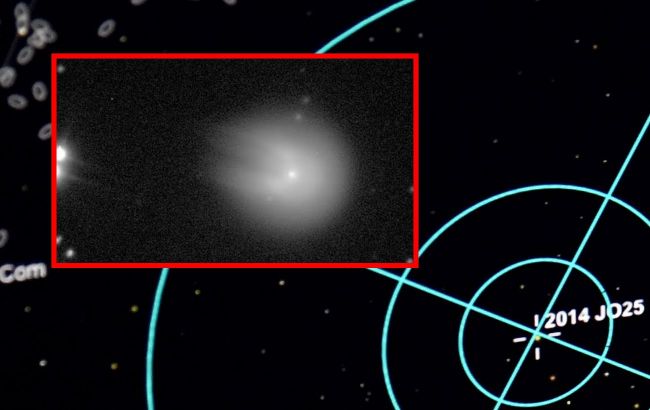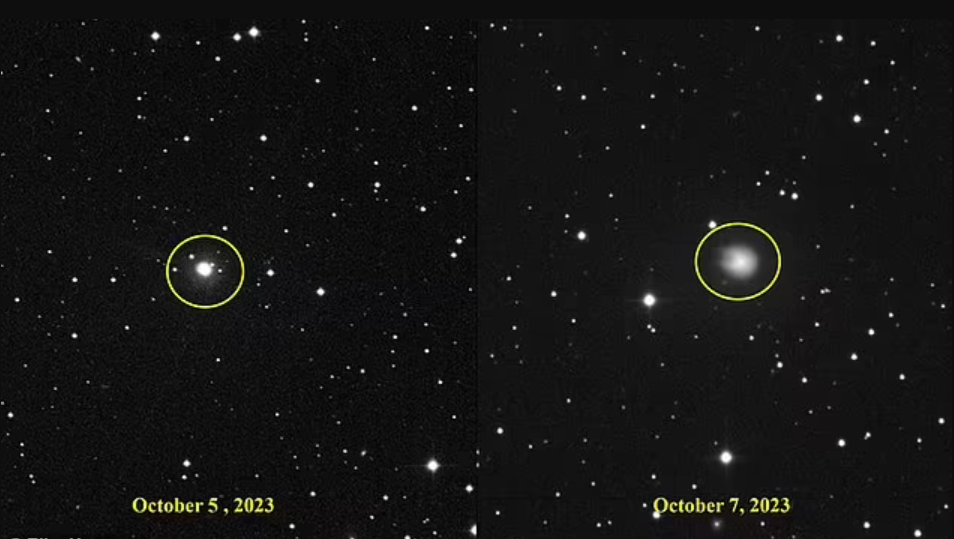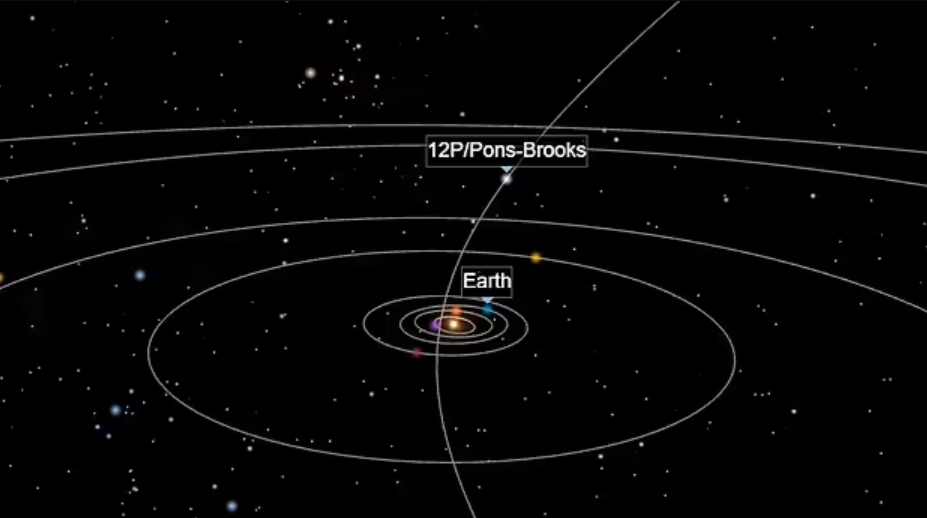Three times the size of Everest: Gigantic volcanic comet approaching Earth
 A massive volcanic comet is heading towards Earth (Collage RBC-Ukraine)
A massive volcanic comet is heading towards Earth (Collage RBC-Ukraine)
Astronomers claim that an enormous comet, which is three times larger than Mount Everest, is heading towards Earth. It is being compared to the most famous comet, Halley, and it is now known when it will approach Earth.
What is known about this comet and when it will come closest to Earth is reported by RBC-Ukraine.
What is known about the comet
The space rock, named 12P/Pons-Brooks, is a type of cryovolcanic or cold volcanic comet. It has a solid core with a predicted diameter of 30 km and is composed of ice, dust, and gases, which act like carbon dioxide in a carbonated beverage bottle.
When heated by the Sun, the pressure inside this cryo-magma continues to build up until nitrogen and carbon dioxide explode and eject icy fragments through large cracks in the core's shell. One of the peculiarities of this comet is its eruptions even during flight.
This comet was first discovered in 1812. Its orbital period is 71 years. The previous perigee was on May 22, 1954. The core's diameter is 30 km. This comet is also referred to as a "Halley-type comet" because its 71-year orbit around the Sun places it in the same class as the most famous celestial body in history - Halley's Comet takes 75 years to orbit Earth, unlike many other comets that take thousands of years to do so.
 A massive icy comet is heading towards Earth (screenshot)
A massive icy comet is heading towards Earth (screenshot)
The closest approach of Pons-Brooks to Earth will be on April 21, 2024, and according to astronomers' predictions, it will reach a magnitude of +4, making it visible from the end of April to mid-June 2024. The peak date when this comet will be brightest is June 2, 2024.
This gigantic comet poses no threat to the Earth's population and belongs to the class of potentially hazardous objects.
After its close encounter with our planet, this space rock will be propelled back into the outer Solar System and will not return until 2095.

The Pons-Brooks comet will be visible to the naked eye (screenshot)
For reference
Asteroid - a large piece of rock left behind after collisions in the Solar System. Most of them are located between Mars and Jupiter.
Comet - a rock covered with ice, methane, and other compounds. Their orbits take them much further out into the Solar System.
Meteor is what astronomers call a flash of light when fragments burn up in the atmosphere. Fragments are also called meteoroids. Most of them are so small that they burn up in the atmosphere.
If a meteoroid reaches Earth, it is called a meteorite. Meteors, meteoroids, and meteorites usually originate from asteroids and comets.
If Earth passes through the tail of a comet, most of the debris burns up in the atmosphere, creating a meteor shower.

